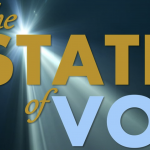How to do voice overs? Well that is a massive subject and so we are just going to cover some the essentials here. To learn more I suggest you take the voice over for beginners course where we cover a lot of how to do voice overs in a lot more detail.
TABLE OF CONTENTS
START WITH THE SCRIPT.
BREATH LIFE INTO WORDS.
ADD IN THE INTENTION.
WARM UP THE VOICE.
RECORD YOURSELF.
SUMMARY.
How To Do Voice Overs – Start With The Script
Working with scripts is the critical first place to start of how to voice overs.
You need to practice reading, not in your head but out loud. You have to read out loud every day in the beginning to learn how to master punctuation, intonation…Now here is the thing, you can read anything to start with that will help you get into the habit of practicing; from newspapers to books to repeating TV commercials.
Remember that every piece of voiceover work involves a script. One of the things that you quickly realise is that whilst it may be written well, it can sound a bit odd when spoken out loud. This is often because it is written to emphasise certain points or in the case of a story depict a character.
So you need to enjoy reading and of course learning how to interpret writing so that you can can bring it to life. This is the art of voice acting. It is the acting skills, as well as the reading skills, you will need to master when you read voiceover scripts. It is often that spark of creativity as a voice over actor that a lot of voiceovers enjoy the most about their work.
So a way to practice how to do voice overs is by simply reading out loud. But there is more to it than that, you need to be critical and improve your skills. So you will need to go back mistakes and read the pages or scripts again. Each time reviewing the sentence where you made a mistake and correcting it.
If you use scripts that you have downloaded of the internet, make sure you have checked them grammatically, it is often silly little things that can disrupt your practice time. Also make sure you have them printed out in an easily legible font.
The next step in how to do voice overs is learning to breath life into scripts.
Breath Life Into Words
You can split how you how to do voice overs into two parts to start with:
- Technical practice – reading, doing drill with tongue twisters, diction and pronunciation exercises, and breathing exercises.
- Interpreting copy and scripts with focus on adding expression and life.
There are so many ways to express different meaning into words through your voice. To get an idea of how powerful the voice is as an instrument I have added a great Ted Talk by Julian Treasure below. In his talk he brilliantly expresses the amazing variety of ways to use your voice to communicate different meanings.
As a beginner to voice over acting, you can improve how you interpret a script by imagining that you are talking to someone else: a friend, a neighbour or someone that you personally know. This is a simple way to take your first steps in how to add the acting part into your voiceover practice.
Voice acting is the creativity you use to to bring life to the written word. It enables you to make a character from a book come to life, to make a documentary interesting or an advertisement compelling. You need to be convincing and believable in all these examples. This why understanding emotions and learning how to express them in your voice is so important. How can you do this? Practice, practice, and of practice! (There is no magic pill for getting all those skills).
So one of the things you can do is to start with a handful (5-6) emotions and practice them. Here is a list of emotions:
- anger
- anxiety
- arrogance
- embarrassment
- boredom
- confidence
- contentment
- depression
- disgust
- ecstasy
- exhaustion
- fear
- guilt
- happiness
- hope
- hysteria
- loneliness
- love
- lovesick
- passion
- romance
- shock
- shyness
- suspicion
Often it is good fun to simply pick one at random and perform a read. For more variety, prepare a second set of practice sentences. Choose one sentence and one emotion at random and act them out.
Add In the Intention
Normally a script will have an underlying intention. An intention is the reason and motive why someone might use emotions. Intention guides you how to interpret a script.
In learning how to do voiceovers you need to understand the different types of intention. A few obvious ones are the need could be for attention, acknowledgment, acceptance, and love. These intentions determine the way you speak.
This is a simple list of the common intentions that used when you speak. For practice, try to think about one intention before you read and practice a script.
- beckon
- beg
- challenge
- charm
- command
- criticize
- dazzle
- demand
- embarrass
- encourage
- flatter
- intimidate
- manipulate
- motivate
- patronize
- please
- plead
- seduce
- tease
- urge
How To Do Voice Overs – Warm Up The Voice
Before you attempt to voice anything you need to warm up. You can’t expect your voice to be at its best without a warmup. There are two parts to a good warm up: your body and your voice. If you are tense you won’t be able to get into the right frame of mind and it will also affect your voice.
To start with you need to simply relax so that you can focus on the job ahead – even if it is just a practice session.
Initially move your body from side to side and do some stretching exercises, whilst keeping your breathing regular and even.
Then as you start to loosen up, gently roll your head slowly clockwise and anti-clockwise, never going too far or exerting any muscles. You can do some shoulder rolls, by rotating them forward and backward, to get rid of any tensions. This simple movements and exercises are just an example of the sort of body and voice exercises you can use to warm up:
- stand in front of a mirror and stretch all your facial muscles. Stretch your mouth wide open, almost like a lion roaring and then relax again.
- scrunch your facial muscles to make your face look small and meek and then relax and repeat.
- pull your tongue out as far as you can and then bring it back in to relax.
- do a ‘siren’ by uttering the phrase “eeee” and hitting the top notes and the lower ones.
- do a ‘trill’ by rolling your tongue along the roof of your mouth and create a “trrrr” or “rrrr” sound.
- do some further workouts using PTKT sounds (pronounced as puhh tuhh kuhh tuhh) and BDGD (pronounced buhh duhh guhh duhh) to warm up your vocal chords further.
- last of all perform some tongue twisters to further exercise your mouth, tongue, lips and cheeks. Say your favourite ones out loud and this could really be a fun exercise.
Record Yourself
An essential part of voice acting is to be able to listen to yourself and be critical about how well you have performed a script. Learning to record your own voice is a vital step in becoming a voice over actor.
As you progress, you will ideally want to build your own home recording studio. To do this you need to determine if you have the skills to or if you need to get someone else to help.
As a beginner though you can simply use you computer or laptop. Todays technology makes it easy to record audio onto a computer where you can then play it back. Once you record your practice sessions you can also easily edit and manipulate your recordings to filter out noise and improve the sound. For now the most important thing is to listen to your voice.
Whether you are using a Mac or PC, you will need a microphone to record your voice. One option is to purchase a microphone ( or you may already have one ). For most beginners a condenser microphone is a good first choice (see our recommended microphones).
Once you are ready find a good location that doesn’t have too much background noise, do a short test recording and check you have the right sound levels. Be sure that the recording meter never goes into the red as this may cause unwanted noise or even distortion. Attach headphones directly to your computer or audio interface for the best quality recording (the sound from speakers will be picked up in your recording).
Begin recording, remembering to keep your original microphone position. Record your voice-over and then listen to the results. When you have finished recording, save your work. You can play your recordings back in a number of different programs but it is worth getting familiar with a program like Audacity (which is a free), easy-to-use audio editor and recorder for Windows, Mac OS X, GNU/ Linux, and other operating systems. As you progress you can use Audacity to produce your own showreels.
Summary of How To Do Voice Overs
Of course this is an outline of how to do voice overs. There is so much more to do and learn. We have lots of resources on Gravy For The Brain to help you. To learn more take a course and start your voice over journey.










